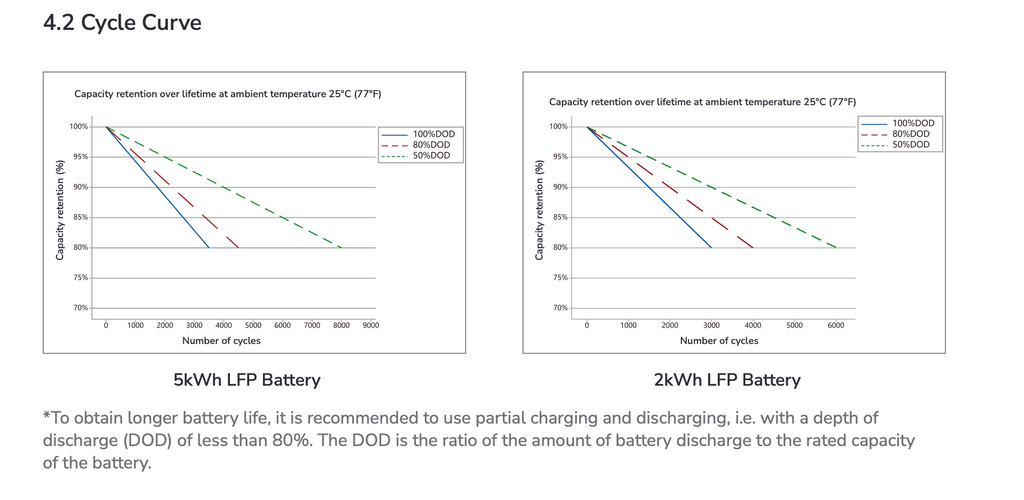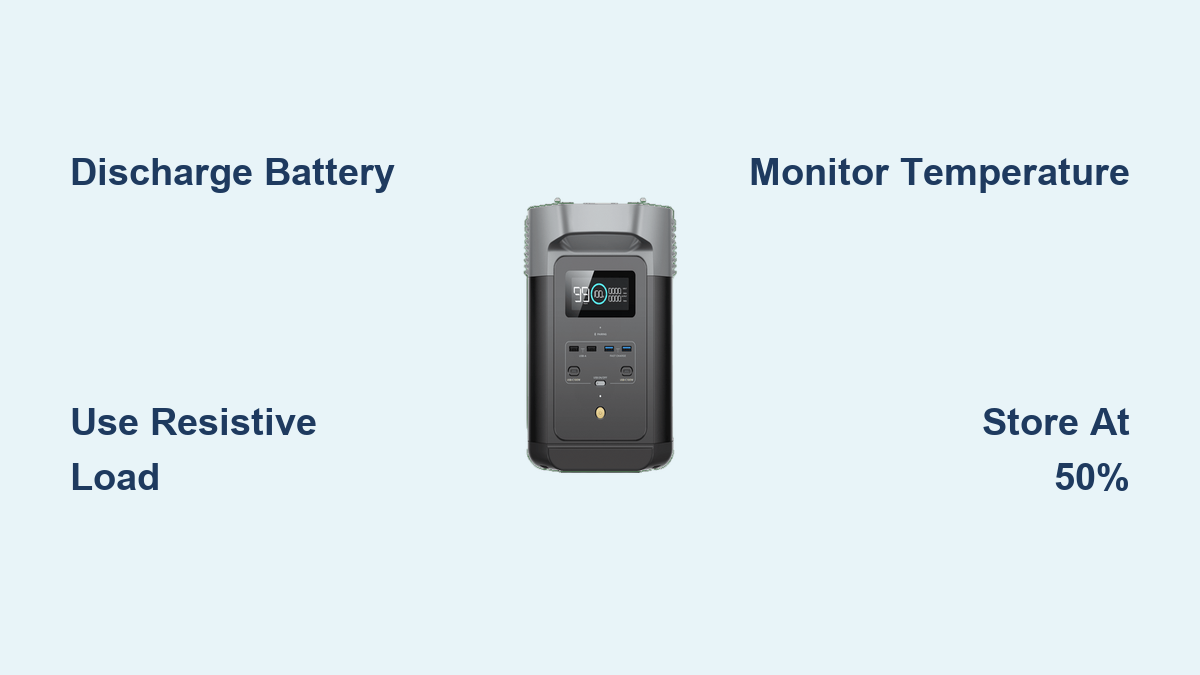Are you looking to fully discharge your EcoFlow battery for calibration, long-term storage, or to test its capacity? It’s a common question, and understandably, you might be hesitant – discharging lithium batteries incorrectly can be risky. Fortunately, there are several safe and effective ways to fully discharge your EcoFlow, and we’ll cover them all in this guide.
This comprehensive guide will take you beyond simply running appliances. We’ll explore the best methods for complete discharge, including using the EcoFlow app, resistive loads, and even connecting to a vehicle. You’ll learn about safety precautions, recommended discharge levels, and how to properly prepare your battery for storage after discharging, ensuring its longevity and optimal performance. By the end of this article, you’ll confidently know how to discharge your EcoFlow battery safely and effectively.
Understanding Why You’d Discharge an EcoFlow Battery
Before diving into the “how-to,” let’s clarify why you might need to discharge your EcoFlow. Common reasons include:
- Calibration: Periodically calibrating the battery management system (BMS) ensures accurate state-of-charge readings.
- Long-Term Storage: Lithium batteries perform best when stored at around 50% charge. Fully discharging before long-term storage prevents degradation.
- Testing Capacity: Discharging to determine actual usable capacity, especially after extended use.
- Troubleshooting: Sometimes a full discharge and recharge cycle can resolve minor software glitches.
Methods for Discharging Your EcoFlow Battery

Method 1: Using the EcoFlow App (Partial Discharge)
The EcoFlow app offers a convenient way to discharge the battery, though it typically won’t reach a true 0%.
- Connect to the App: Ensure your EcoFlow is connected to your Wi-Fi network and paired with the EcoFlow app.
- Access Settings: Navigate to the battery settings within the app.
- Initiate Discharge: Look for an option like “Discharge to 0%” or “Deep Discharge.” (Availability varies by model).
- Monitor Progress: The app will display the discharge progress. Expect it to stop around 10-20% state of charge for safety.
Important: This method is ideal for regular calibration and isn’t a full discharge.
Method 2: Using a Resistive Load (Recommended for Full Discharge)
This method uses a device designed to draw power, fully discharging the battery.
- What is a Resistive Load? A resistive load (like a space heater, incandescent light bulb, or specialized discharge resistor) converts electrical energy into heat.
- Choosing a Load: Select a load with a wattage appropriate for your EcoFlow’s capacity. A higher wattage will discharge faster, but ensure it doesn’t exceed the EcoFlow’s continuous output.
- Safety First: Never leave a resistive load unattended. Monitor the temperature of both the EcoFlow and the load.
Fix Steps:
1. Connect the Load: Plug the resistive load into the EcoFlow’s AC outlet.
2. Monitor Discharge: Observe the EcoFlow’s display or the app to track the state of charge.
3. Discharge to Target Level: Continue discharging until you reach the desired level (e.g., 1-3% for storage).
4. Disconnect Load: Once discharged, immediately disconnect the resistive load.
Testing: Verify the discharge level on the EcoFlow’s display or app.
Method 3: Utilizing High-Power Appliances (Efficient Discharge)
Connecting multiple high-draw appliances can also effectively discharge your EcoFlow.
- Identify Appliances: Gather appliances like space heaters, hair dryers, kettles, or power tools.
- Calculate Combined Wattage: Ensure the combined wattage doesn’t exceed the EcoFlow’s maximum AC output.
- Connect and Monitor: Plug the appliances into the EcoFlow and monitor the discharge progress.
- Disconnect When Finished: Turn off and unplug appliances as the battery nears your target discharge level.
Method 4: Discharging via Vehicle Connection (Advanced – Requires Adapter)

Some EcoFlow models can be discharged through a vehicle’s 12V outlet using a compatible adapter.
- Check Compatibility: Verify your EcoFlow and vehicle are compatible with this method.
- Obtain Adapter: Purchase the appropriate EcoFlow vehicle charging/discharging adapter.
- Connect and Monitor: Connect the adapter to your EcoFlow and vehicle’s 12V outlet. Monitor the discharge via the EcoFlow app.
- Disconnect When Finished: Disconnect the adapter once the desired discharge level is reached.
Safety Precautions When Discharging

- Ventilation: Always discharge in a well-ventilated area.
- Monitoring: Continuously monitor the EcoFlow and the discharge load for overheating.
- Avoid Over-Discharge: Do not attempt to discharge the battery below the manufacturer’s recommended minimum voltage.
- Fire Safety: Keep a fire extinguisher nearby.
- No Attended Discharge: Never leave the discharging process unattended.
- Temperature: Avoid discharging in extreme temperatures.
Preparing Your EcoFlow for Long-Term Storage
After discharging, proper preparation is crucial for long-term storage.
- Charge to 50%: Recharge the EcoFlow to approximately 50% state of charge.
- Cool Down: Allow the battery to cool completely before storage.
- Dry Environment: Store in a cool, dry place away from direct sunlight.
- Temperature Range: Maintain a storage temperature between 41°F (5°C) and 86°F (30°C).
- Periodic Check: Check the charge level every few months and top up if needed.
Pro Tips for EcoFlow Discharge and Maintenance
- Calibration Frequency: Calibrate your EcoFlow every 3-6 months for optimal accuracy.
- Resistive Load Selection: A dedicated discharge resistor is the safest and most controlled option.
- Temperature Monitoring: Use a non-contact infrared thermometer to monitor temperatures.
- Software Updates: Keep your EcoFlow’s firmware updated for improved performance and safety features.
- Avoid Extreme Temperatures: Lithium batteries are sensitive to temperature. Avoid charging or discharging in very hot or cold environments.
When to Seek Professional Help
- Unusual Sounds or Smells: If you notice any unusual sounds (hissing, popping) or smells (burning) during discharge, immediately disconnect everything and contact EcoFlow support.
- Overheating: If the EcoFlow or the discharge load overheats despite proper ventilation, stop the process and seek professional advice.
- Battery Not Responding: If the battery fails to discharge or respond to commands, contact EcoFlow support.
FAQ
Q: Can I use a power strip with my EcoFlow?
A: Yes, but ensure the power strip is rated for the combined wattage of the devices you’re connecting.
Q: How long does it take to fully discharge an EcoFlow Delta 2?
A: The discharge time depends on the load. A 1800W resistive load will take approximately 1-2 hours.
Q: Is it bad to fully discharge a lithium battery?
A: While occasional full discharges for calibration are acceptable, frequent full discharges can degrade the battery over time.
Q: What’s the best way to store my EcoFlow for several months?
A: Charge to 50%, store in a cool, dry place, and check the charge level every few months.
Get Your EcoFlow Working Again
You now have the knowledge to safely and effectively discharge your EcoFlow battery for calibration, storage, or testing. Remember to prioritize safety, monitor the process closely, and follow the recommended storage guidelines.
Do you have any questions or experiences with discharging your EcoFlow? Share them in the comments below to help other users!

